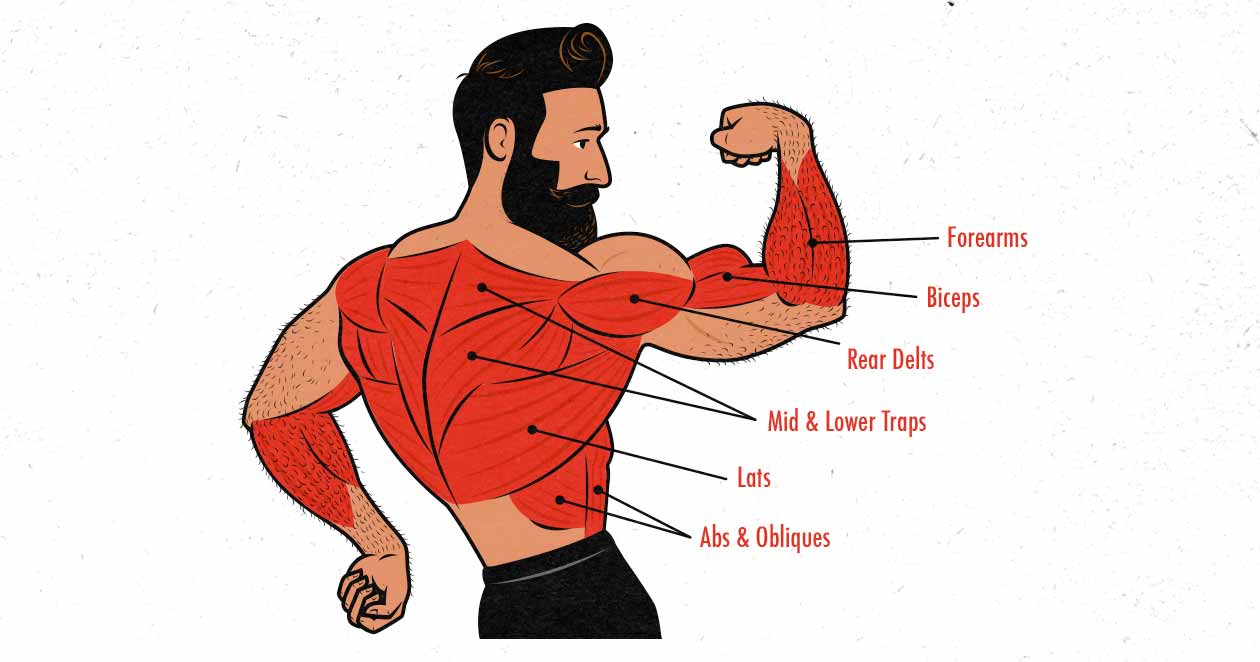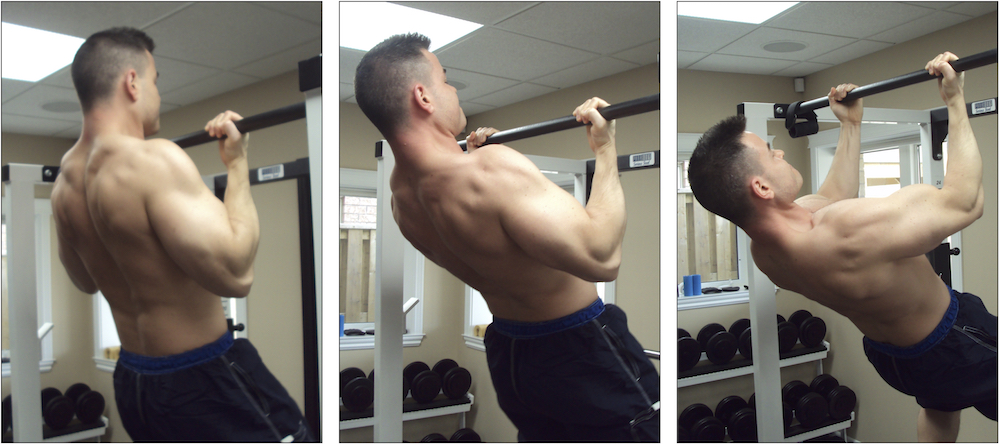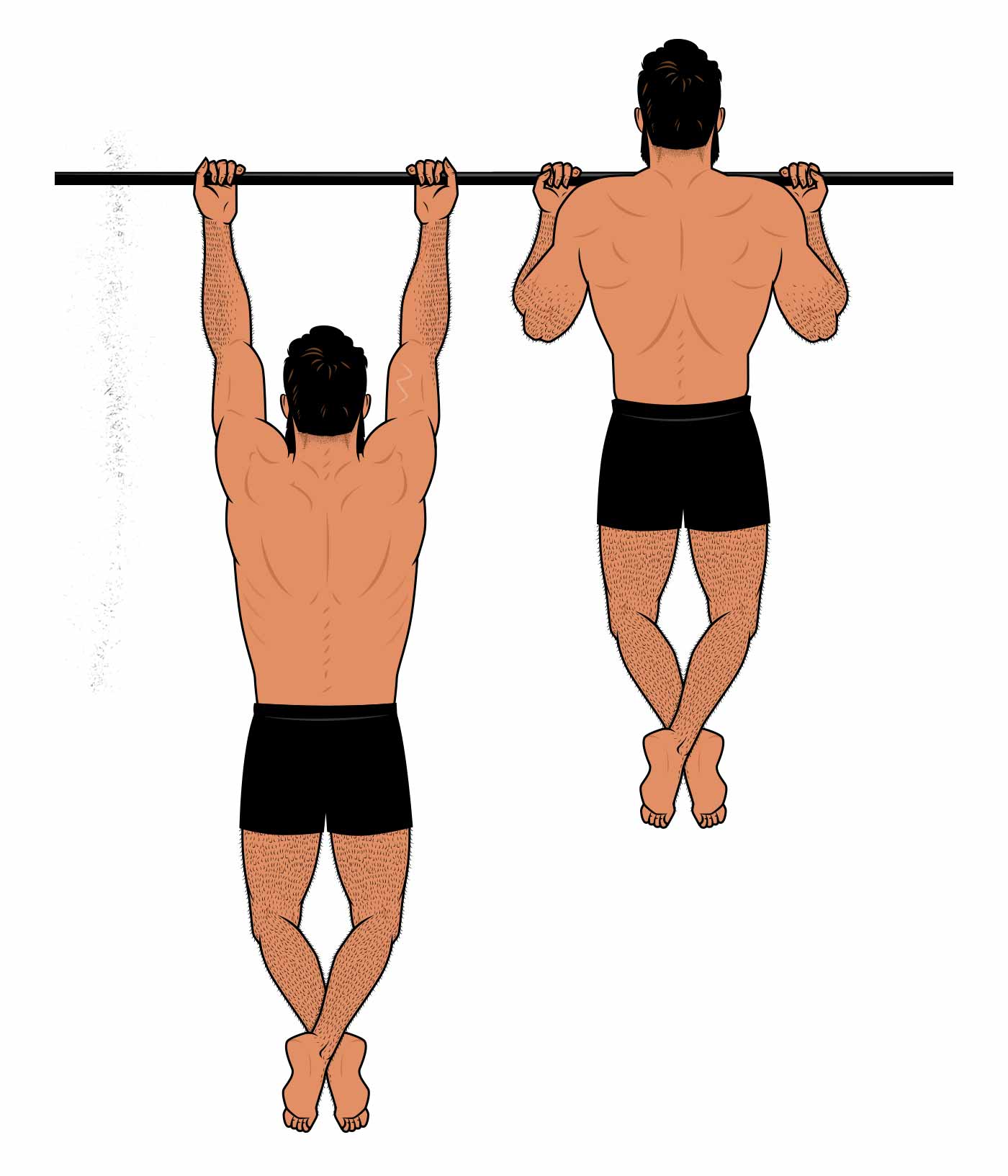Have you ever wondered if chin-ups are actually beneficial for your abs? I mean, they’re mainly known as an upper body exercise, right? But here’s the thing – chin-ups can actually have a significant impact on your abs too! In this article, we’re going to dive into the relationship between chin-ups and abs, and you’ll be surprised to learn just how much these two are connected.
So, let’s get straight to it. While chin-ups primarily target your back and biceps, they also engage your abs and core muscles as stabilizers. When you perform a chin-up, your abs need to work hard to maintain a stable position and prevent your lower body from swinging.
This means that with every repetition, you’re not only strengthening your upper body but also giving your abs a good workout. But don’t worry, we’ll go into more detail about the exact mechanics and benefits in the rest of the article. So strap yourself in, because you’re about to discover the fascinating relationship between chin-ups and abs!

1. What are chin-ups?
– Definition of chin-ups
Chin-ups are a type of exercise that primarily targets the muscles in the upper body, including the back, shoulders, and arms. The exercise involves suspending your body from a bar while pulling yourself up until your chin reaches or goes beyond the level of the bar.
– Muscles targeted during chin-ups
Chin-ups primarily target the latissimus dorsi, or the lats, which are the large muscles in your back. Additionally, they engage the biceps, deltoids, trapezius, and rhomboids. While chin-ups are commonly known for their upper body benefits, they can also have a positive impact on your abs.
2. How do chin-ups work?
– Mechanics of chin-ups
During a chin-up, your upper body is pulling against gravity, forcing your muscles to contract and lift your body weight. This movement requires significant strength and coordination of the muscles in your arms, back, and shoulders.
– Activation of core muscles during chin-ups
To perform chin-ups effectively, you need to engage your core muscles. The core muscles provide stability and support to your spine, allowing for proper form and preventing excessive strain on your shoulders and lower back. When doing chin-ups, your abs contract to help stabilize your torso and maintain a straight body position.

3. Can chin-ups help strengthen abs?
– The role of chin-ups in core development
While chin-ups primarily target the muscles in your upper body, they also engage your abdominal muscles to a lesser extent. The abs play a crucial role in stabilizing your body during the exercise, especially when you maintain a straight body position and avoid swinging or using excessive momentum.
– Benefits of chin-ups for abs
Including chin-ups in your workout routine can provide several benefits for your abs. Firstly, chin-ups can help increase overall core strength and stability, as the abs are required to work in conjunction with other muscles. Additionally, chin-ups can help improve muscular endurance in your abs, making it easier to perform other ab exercises.
4. Chin-ups vs. other ab exercises
– Comparing chin-ups to traditional ab exercises
Chin-ups offer a different type of ab workout compared to traditional ab exercises such as crunches or planks. While traditional ab exercises primarily focus on specific areas of the abs, chin-ups engage the abs in a more dynamic and functional way.
– How chin-ups challenge abs differently
Unlike isolated ab exercises, chin-ups require your abs to work in coordination with other muscles, leading to improved overall core strength. The movement in chin-ups forces your abs to stabilize your body and maintain proper form, which can lead to better ab definition and increased functionality.

5. Tips for incorporating chin-ups into ab workouts
– Proper form and technique for chin-ups
To effectively incorporate chin-ups into your ab workouts, it’s important to maintain proper form and technique. Start by gripping the bar with your palms facing towards you, slightly wider than shoulder-width apart. Engage your abs and squeeze your glutes to maintain a straight body position throughout the exercise.
– Integrating chin-ups into a comprehensive ab routine
To maximize the benefits of chin-ups for your abs, consider combining them with other ab exercises. For example, you can alternate between chin-ups and planks, or perform a set of chin-ups followed by a set of bicycle crunches. This way, you can target your abs from different angles and challenge them in various ways.
6. Common mistakes to avoid when doing chin-ups for abs
– Over-reliance on arm strength
One common mistake when performing chin-ups is relying too much on your arm strength and neglecting proper engagement of your core muscles. Remember to focus on activating your abs and maintaining a stable body position throughout the exercise.
– Lack of control and engagement of core muscles
Another mistake to avoid is swinging or using excessive momentum during chin-ups. This not only reduces the effectiveness of the exercise but also puts unnecessary strain on your shoulders and lower back. Instead, focus on controlled movements and engage your core muscles to maintain stability.
7. Safety considerations and precautions
– Warm-up exercises before attempting chin-ups
Before attempting chin-ups, it is important to warm up your muscles and joints to reduce the risk of injury. Perform dynamic stretches such as arm circles, shoulder rotations, and bodyweight squats to get your body ready for the exercise.
– Gradual progression and proper rest periods
If you’re new to chin-ups or have limited upper body strength, it’s essential to start with variations or assistance, such as using resistance bands or an assisted chin-up machine. Gradually increase the difficulty as your strength improves. Additionally, make sure to incorporate proper rest periods between sets to allow your muscles to recover.
8. The importance of a balanced exercise routine
– Incorporating variety in training
While chin-ups can be beneficial for strengthening your abs, it’s important to maintain a balanced exercise routine that includes a variety of exercises targeting different muscle groups. Incorporate exercises such as planks, Russian twists, and leg raises to target your abs from various angles and promote overall core strength.
– Additional exercises to complement chin-ups for overall core strength
To further enhance your ab development and overall core strength, consider adding exercises like deadlifts, squats, and kettlebell swings to your routine. These compound exercises engage multiple muscle groups, including the abs, and can help boost your overall strength and stability.

9. Tracking progress and setting goals
– Measuring strength gains from chin-ups
To track your progress and measure strength gains from chin-ups, keep a record of the number of reps and sets you can perform. Over time, aim to increase the number of reps or advance to more challenging variations, such as wide-grip chin-ups or weighted chin-ups.
– Setting realistic targets for ab development
Setting realistic goals for ab development is important to stay motivated and track your progress effectively. Keep in mind that visible abs are primarily determined by body fat percentage, and while chin-ups can help strengthen your abs, they alone may not result in a six-pack. Focus on overall strength and functionality instead of solely aesthetic goals.
10. Conclusion
– Summary of chin-ups’ impact on abs
While chin-ups are primarily known for their benefits in targeting the upper body muscles, they can also have a positive impact on your abs. Chin-ups engage the abs as stabilizer muscles and contribute to overall core strength and stability.
– Encouragement to combine chin-ups with other ab exercises for optimal results
To maximize the benefits of chin-ups for your abs, it’s recommended to combine them with other ab exercises that target different areas and challenge your abs in various ways. By incorporating a variety of exercises into your routine and maintaining proper form and technique, you can achieve optimal results for your abs and overall core strength. So, include chin-ups in your workout routine and reap the benefits for your abs!




